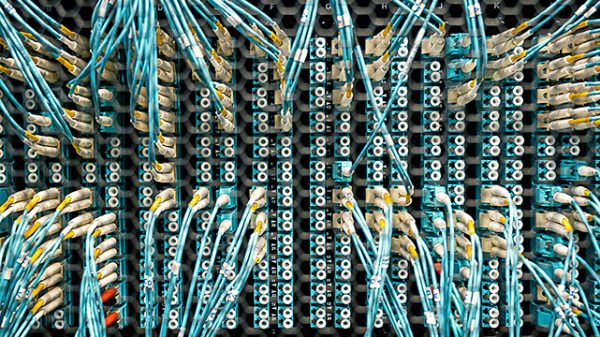

New study sponsored by SAS shows tangible business value despite challenges
AIoT, the convergence of artificial intelligence and the Internet of Things, is enhancing efficiency, security and decision making at manufacturing, industrial and energy companies worldwide, per research shared by SAS, a global leader in data and AI.
Key findings from the IDC InfoBrief, How AIoT Is Reshaping Industrial Efficiency, Security, and Decision-Making, sponsored by SAS, include:
- Predictive maintenance dominates current AIoT use. Nearly 71% of organizations use AIoT for predictive maintenance, the most widely adopted use for manufacturing/industrial and energy companies surveyed. IT automation (53%) and supply and logistics (47%) were the next most cited uses for AIoT.
- AIoT drives tangible business value. 54% of respondents anticipate major cost savings, 52% predict smarter and faster innovation and 49% expect streamlined operations from their investment in AIoT. Additionally, 63% believe AIoT will boost productivity and competitiveness.
- Skills gap emerges as the top challenge. The skills gap is the biggest barrier to AIoT success, outpacing legacy system integration and data quality issues as the most significant roadblock. Other challenges include high implementation costs, business process misalignment and cultural resistance. Addressing these issues is essential to unlocking AIoT’s full potential.
- Heavy AIoT users see greater value. Organizations using AIoT heavily are twice as likely to report benefits that significantly exceed expectations as those that only use the technology sparingly. Strikingly, less than 3% say the value of AIoT “did not meet expectations.”
- Momentum builds. A full 62% of organizations globally have adopted AIoT, with another 31% planning to do so. Of current adopters, 43% have achieved widespread or fully integrated deployments.
- Regional adoption and perceived value vary. The Asia Pacific region leads in moderate adoption of AIoT, while North America shows a strong push for significant growth. And the Europe, Middle East and Africa (EMEA) region remains optimistic regarding AIoT’s value across all usage levels.
Kathy Lange, IDC Research Director, AI Software, said:
“Our research found that heavy users of AIoT were almost twice as likely to report benefits that significantly exceeded expectations, while less than 3% of industrial executives surveyed said AIoT’s value did not meet expectations.”
“The takeaway is clear: AIoT is fueling innovation, streamlining operations and driving smarter, faster decisions.”
The IDC research is based on a global survey of more than 300 industrial executives in the manufacturing and energy industries.
“This IDC InfoBrief confirms what manufacturing and energy customers are telling us worldwide: AIoT has evolved from a buzzword to a potent technology and business imperative. Whether enhancing the predictive maintenance of critical equipment or improving operations across factories and electric grids, AIoT drives major cost savings, quality improvements and efficiency gains.” said Jason Mann, Vice President of IoT at SAS.
The transformation of manufacturing
Manufacturers and industrial companies face countless challenges, including supply chain disruptions, national security concerns and persistent labor shortages. In response, manufacturers are accelerating digital transformation strategies, leveraging technologies like AIoT to modernize operations and address workforce gaps.
Factory automation is one of the most visible outcomes of this transformation, and AIoT is a catalyst driving it forward. Across sectors, manufacturers are using AIoT to automate not just tasks, but decisions – optimizing processes, improving product quality and reducing downtime.
“As this InfoBrief clearly indicates, AIoT drives business value, and the more industrial companies use it, the greater benefits they see. We anticipate the adoption of AIoT solutions will accelerate as companies experience greater efficiency, productivity and cost savings. TD SYNNEX remains committed to supporting SAS Partners and the AIoT customers they serve.” said Dez Tsai, Global Sr. Director of AI, Data and Vendor Transformation at TD SYNNEX, SAS’ strategic IT distribution partner.
Energizing the market
For power and energy companies, AIoT offers many benefits. By analyzing data from countless sensors across the grid and in major equipment (including generators, power plants and wind turbines), AIoT can improve grid efficiency by helping operators manage costs, predict demand, optimize operations and enhance sustainability efforts.
And AI technologies give more people within an organization, including those with varying skill levels and job roles, the ability to interact with data. This directly addresses the skills gap found in the research. People working on the plant floor, servicing overhead lines or creating corporate strategy can all make data-driven decisions that leverage IoT and generative, agentic and traditional AI (i.e., machine learning).
Accelerating AIoT innovation
SAS IoT solutions combine AI, machine learning and edge-to-cloud integration, enabling analysis of high-volume, high-velocity data. And joining AI with these IoT solutions extends the value of existing infrastructure investments and digitally transforms the workforce by shifting from manual oversight to intelligent orchestration.
Other organizations benefiting from SAS IoT and streaming analytics for improved asset reliability, enhanced product quality and increased efficiency across connected systems include: Georgia-Pacific, Jakarta Smart City, Lloyd’s List, Lockheed Martin, Town of Cary (North Carolina), Volvo Trucks and Mack Trucks, wienerberger.
The post AIoT drives transformation in manufacturing and energy industries appeared first on IoT Business News.






















